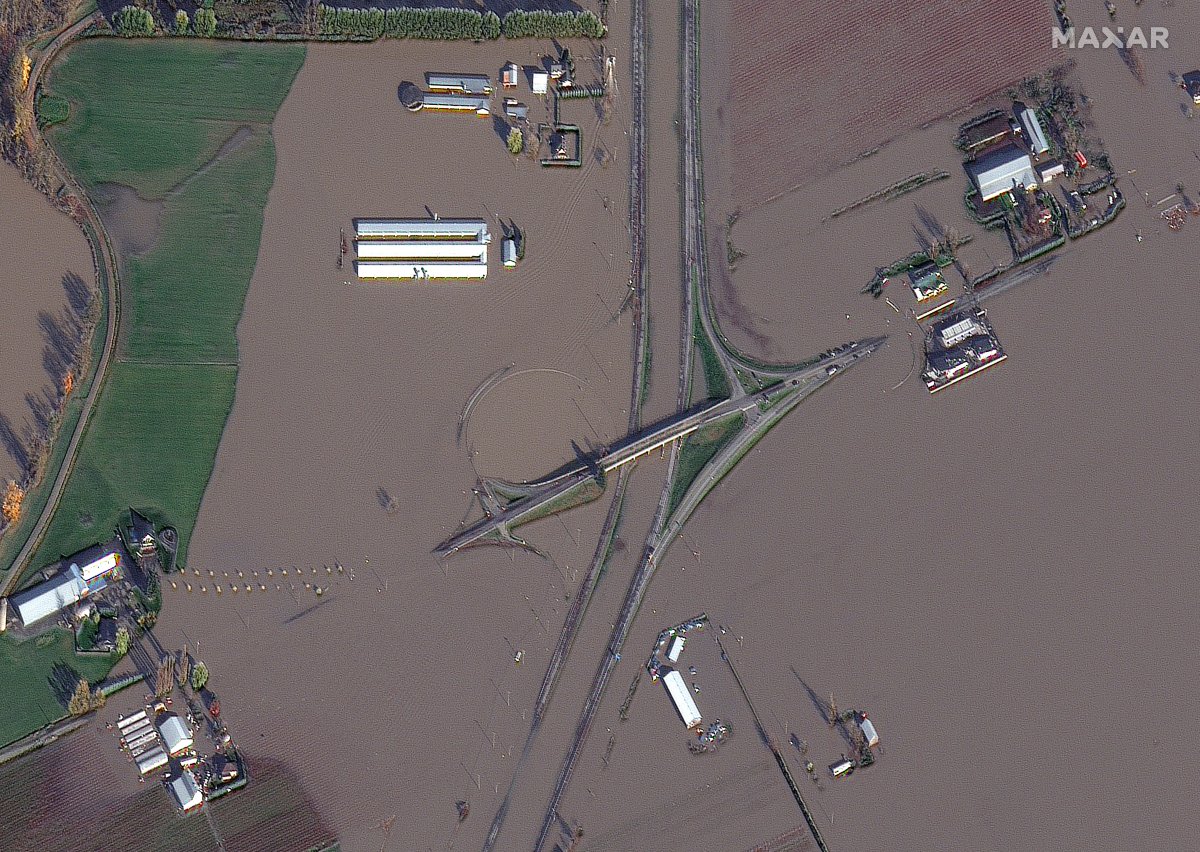The ministers of agriculture for British Columbia and Canada toured farms in the the flood-devastated Sumas Prairie area of Abbotsford, B.C. on Friday.

Both ministers said they were committed to helping the region recover, but that it was still too soon to provide details of what that support might look like.
“We’ve seen and heard the stories from the farmers who are still in some ways in the middle of this emergency,” B.C. Minister Lana Popham said, adding that tears were shed during the emotional visit.

“The loss that has been felt is absolutely profound. The best way to see that is on the ground with the farmers.”
Popham and federal Minister Marie-Claude Bibeau toured a poultry farm, where they met farmers, saw the direct flooding impacts on equipment and animals, and watched video footage of the flooding.
Popham has previously said 628,000, 420 dairy cattle and roughly 12,000 hogs died in the Sumas Prairie.
Bibeau praised the resilience of farmers and their willingness to rebuild, adding that it was important for the government to stand with them.
“It was very impressive to see the scale of what happened here and the fact that the water was so high (and) lasted so long,” Bibeau said.
“When it lasts longer obviously the damage is much more significant.”
Bibeau said developing a long-term assistance for farmers, many who lost livestock or have had their crops devastated, remains a work in progress.
Immediate support is being provided through the Red Cross with the province and federal government matching funds, she said.
But understanding the scale of an aid program and the needs of farmers could take months, she added, noting it won’t be until spring before the effects on some farmers’ fields are known.
“The evaluation, we can’t do it overnight.”
Popham said the province has heard loud and clear that farmers want to get back to work, and that officials have been meeting with them to try and identify immediate short-term needs and gaps in support.
“We need to figure out a way to address that more immediate need as we develop a program for the future,” she said.
She said the province believes it has a handle on challenges getting feed to farmers, and that it was covering the cost difference of more expensive product.
On Thursday Abbotsford lifted a “Do not use” water advisory for Sumas Prairie residents, however a boil water advisory remained in effect.
Countless acres of farmland have also been engulfed with water, resulting in lost crops that could take years to replace. Barns, silos, tractors and other costly farming equipment was destroyed.
“I was out there earlier this morning and I can see that there’s silt on a lot of broccoli and cauliflower fields,” Braun said in a Wednesday news conference.
“I am concerned about the farmers who weren’t able to harvest their cold crops … If it takes a year or two to till that soil, they’re not going to have any revenue for a couple of years.”
Earlier this week, the Insurance Bureau of Canada estimated the record-breaking floods to have caused $450 million in insured damage.
The preliminary tab makes it the most expensive weather disaster in the province’s history, and overall economic losses — including highway repairs — have not yet been counted.
The Sumas Prairie in Abbotsford was one of the hardest-hit areas, as flooding from the Nooksack River in Washington spilled across the border, overtaking local dikes.






Comments